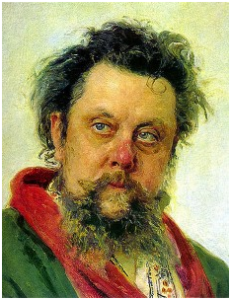 The Indo-European root ATR, which gave the Old English word atter, listed in the dictionary called the Epinal glossary, was not the only one that connoted fire.
The Indo-European root ATR, which gave the Old English word atter, listed in the dictionary called the Epinal glossary, was not the only one that connoted fire.
The word fire itself comes from PEUOR, from which we also get pyre, a pile of wood or any other combustible material on which to incinerate a dead body. The assonant word pile has also been used to mean a funeral pyre. Here is Edward Gibbon in The History of the Decline and Fall of the Roman Empire (1776), describing how magistrates in provinces of the Roman empire obeyed an edict of Diocletian to destroy Christian churches: “. . . after taking away the doors, the benches, and the pulpit, which they burnt, as it were in a funeral pile, they completely demolished the remainder of the edifice.”
There are too many words beginning pyro- to enumerate here. Many of them denote substances that are produced by burning or distillation. Pyromellitic acid is, unsurprisingly, produced by heating mellitic acid; pyropectic acid by heating pectin; pyroarsenate salts from arsenates; pyrodextrin from starch; and pyrocamphretic acid from camphretic acid, itself formed from reacting camphor with nitric acid. You can perhaps guess how pyrocitric acid and pyromucic acid are formed. Distillation of glycerol produces pyroglycide, of guaiacum resin pyroguaiacic acid (or guaiacol), of quinic acid pyroquinol (now called hydroquinone), and of lithofellic acid pyrofellic or pyrolithofellic acid. Pyruvic acid, formed by distillation of glyceric acid, cream of tartar, or tartaric acid, was also once called pyroracemic acid, for reasons that will have to wait for another day.
Pyromania, an irresistible urge to set fire to things, is an impulse control disorder, as are intermittent explosive disorder, kleptomania, and trichotillomania. These may be related to other compulsive behaviours, such as pathological gambling, compulsive buying disorder, compulsive sexual behaviour, and internet addiction. Pathological gambling has been linked to the use of dopamine receptor agonists, and the risk in people with Parkinson’s disease taking levodopa is related to having at least one copy of the 7-repeat allele in the dopamine receptor DRD4 gene. A pyrophile is also a pyromaniac, but in 1902 Arthur Taquin used it to describe anyone who believed that volcanic eruptions involved heat from the earth’s interior, rather than, as he proposed, being due to interception of solar energy by mountains, generating fire.
Pyropuncture was an ancient method for evacuating pus from a surface abscess by the use of a hot needle, in preference to incising it. This has also been used in modern times.
Empyreuma was an odour or taste of charred organic matter, such as possessed by some volatile or oily compounds, empyreumatic oils. In 17th century medical theory, empyreuma was thought to be heat that remained in the body after a burn or something that caused a fever. This led to the use of empyreumatic oils for astringent purposes, to treat disorders such as nose bleeds, vaginal and penile discharges, ulcers, and sore throats, and no doubt as an antipyretic. Such oils included catechu or cutch, obtained from various Eastern trees and shrubs, typically Acacia catechu; daggett, from the European white birch; pyrothonide, obtained by burning paper or rags (from a Greek word for linen, ὀθόνη linen or sailcloth); and Dalbergia sissoo wood oil, a traditional treatment for menstrual disorders.
PEUOR, fire, also connoted flaming red. Red headed Pyrrhus suffered so many losses in winning battles that his victories came to be called pyrrhic. In remorse at the death of the red headed princess Pyrene, whom he had drunkenly raped, Heracles repeatedly cried out her name, which echoed in the surrounding mountains, giving them their name, the Pyrenees. Burrus in Latin meant red, sbirri are Italian policemen with red uniforms, and a burro is a red coated Spanish donkey.
Image: Ilya Repin’s portrait of Modest Mussorgsky (1881); the composer died a few days later from the effects of alcoholism
A borracho is a Spanish drunk, with his red nose, as drunkards are often depicted (pictures). Borachio is an associate of Don John in Much Ado About Nothing, although whether Shakespeare meant him to be played as a drunkard is not clear.
I hope that these verbal pyrotechnics aren’t giving you pyrosis.
Image: The happy violinist with a glass of wine (c.1624) by Gerrit van Honthorst
Jeffrey Aronson is a clinical pharmacologist, working in the Centre for Evidence Based Medicine in Oxford’s Nuffield Department of Primary Care Health Sciences. He is also president emeritus of the British Pharmacological Society.
Competing interests: None declared.


